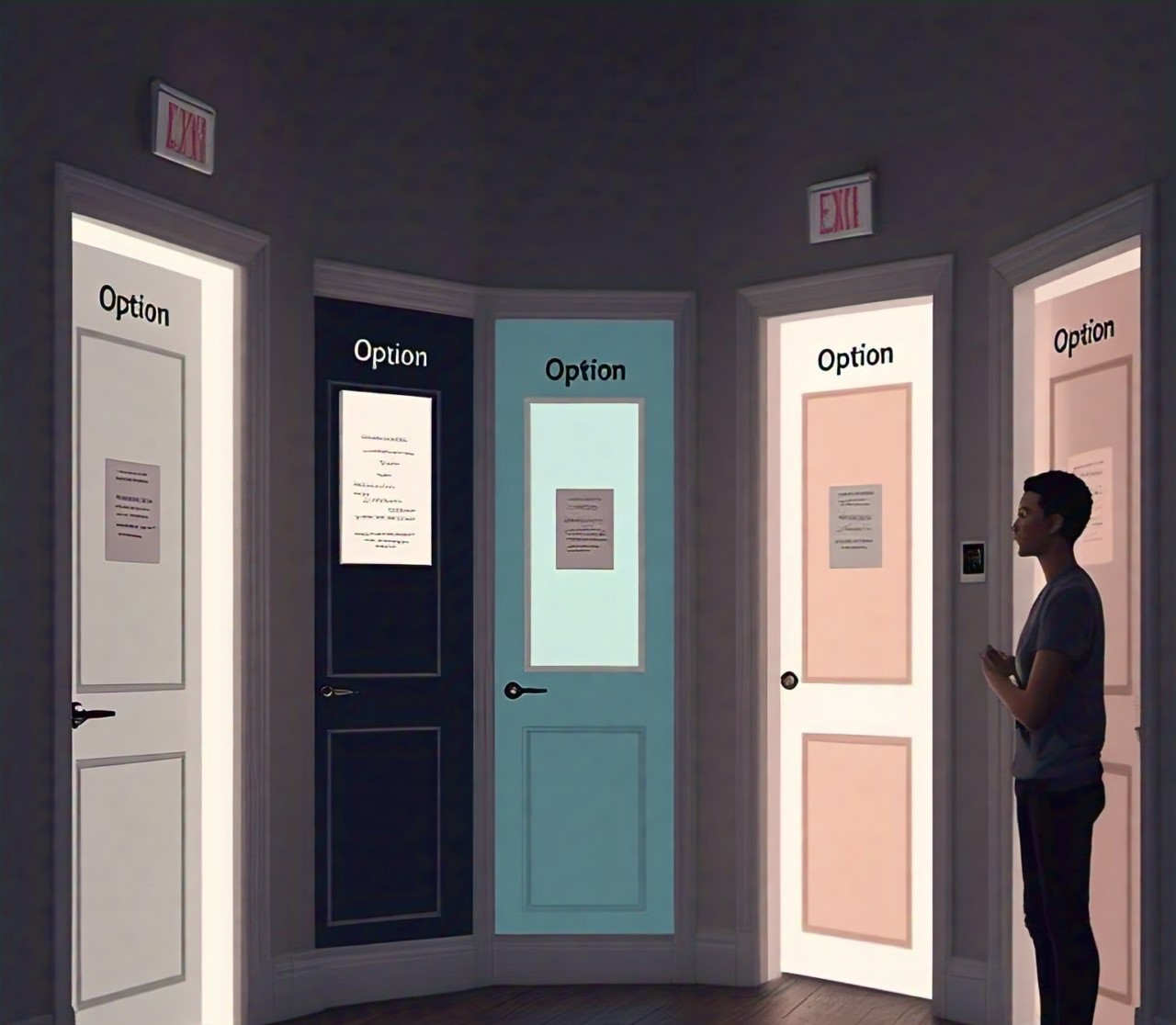The concept that disruptive innovations are the norm, first introduced in 1995, was proven to be a potent method of analyzing innovation-driven growth. Many executives of small, entrepreneurial businesses are raving about it as their primary guide, as do many executives of established, large companies.
The saying goes that “good ideas are a dime a dozen,” it takes more than just brilliant ideas to create a disruptive venture that can make a difference for millions worldwide.
What Is Disruptive Thinking and Innovation?
Disruptive thinking is an approach that opposes established ideas and concepts by challenging the status quo to discover creative solutions that defy established norms.
Disruptive thinking is often associated with an open-minded and curious mindset and the desire to think outside the box and take risks; it also allows you to explore different strategies. People who apply disruptive innovative thinking are usually willing to confront uncertainty and confusion and view challenges as opportunities to grow and learn.
Innovative technology challenges established norms and creates positive change within organizations and industries. They’re not afraid to challenge the traditional methods of conducting business and seek out disruptive innovative solutions to issues.
Disruptive innovation alters business structures and creates new products and services that are available to a wider marketplace, according to Investopedia.
“Being a disruptor isn’t simply being able to understand the market. It’s recognizing an opportunity in the market that nobody else is tapping into,” says Alok Chaturvedi, a management professor at the Purdue University Department of Management. “It means figuring out creative ways not just to solve problems for the end user but to give yourself a market advantage.”
Chaturvedi says the concept of disruption is a process in the beginning; it’s observing.
“Observe those who are your clients. What are their biggest pain points? What are their biggest challenges? If you know this, you will be able to find the appropriate technological strategies to assist them in overcoming these challenges,” says Chaturvedi. “The process of disruption involves taking your idea and moving it upmarket until you are confronting the established leaders in your industry and changing the system itself.”
Disruptive leadership is the style most commonly associated with significant shifts, particularly ones that impact the growth of a sector.
What makes a leader disruptive? Is it the industry-changing idea they have?
No! Anyone can come up with an amazing idea.
A disruptive leader can bring a novel idea to life because they have certain qualities that are in conjunction with disruptive thinking.

Characteristics of a Disruptive Innovative Thinking Leader
The term “disruptive thinker” refers to one who can analyze and process information in a unique and innovative method that utilizes their sense of perspective, intuition, and emotional perception to create new concepts, ideas, and perspectives different from conventional and established patterns. A disruptive thinker is capable of thinking beyond the boundaries of rationality and making the right choices, using their prior information, their experience, and the ability to connect information. Disruptive thinker also has an elevated level of emotional awareness that helps them control their emotions efficiently and utilize their emotions to boost their creative thinking and critical thinking.
Market disruptors have concepts that don’t limit themselves to the norm; they develop new business models that do not only benefit their businesses but also set innovative standards. Their products and services not only reach the market but also change the world.
Different from other businesses in their field, disruptive ventures are able to make quantum leaps and small incremental adjustments. They see opportunities to change the way people view normal and utilize the ability of entrepreneurship to transform how people think about business. The traits of a disruptive leader:
Risk-tolerant
Disruptive leaders are tolerant of risk; they push the boundaries and challenge conventional ways of working in order to accomplish their goals.
Maybe more so than every other attribute, the risk-taking aspect is what distinguishes disruptive leaders; however, while disruptive leadership may be highly effective in generating creativity, it also can be dangerous.
In her disruptive Ted Talk, Col. Jill Morgenthaler explains her experience; in order to stop inhumane treatment, racism, and sexism that were prevalent in the military, she had to violate some rules and defy directives. It was a risky move and could have brought about the end of her career in the military, but since she believed that it was important to right the wrongs that she faced and was determined to do so, she followed the instructions that were offered by George S. Patton Jr.: “Do your duty as you see it, and damn the consequences.”
Finding a balance between reward and risk is the biggest challenge for successful leaders disrupting the status quo. The consequences of breaking the rules can be disastrous, but if you have faith in the cause you are fighting for and have the possibility of positive change, it might be worthwhile to give it a shot.
Entrepreneurial Mindset
Forbes defines an entrepreneurial mindset to be “a way of thinking that enables you to seek out problems others have not solved, create potential solutions, overcome challenges, be decisive, and accept responsibility for your outcomes.” It allows successful disruptors the ability to see opportunities and to take action.
“Having an entrepreneurial mindset really helps with your observational skills,” Chaturvedi adds. “It allows you to think about what is the next chance for me? What could I do? What can I do to make it different? What could I do to change?”
Adaptable and Agility
Agility can be swift to pivot and respond rapidly to whatever changes are taking place and to be able to learn as you progress quickly.
“Fail fast, scale fast,” Chaturvedi says. If you’re experimenting with something, If it’s working, then expand it. If it’s not functioning, toss it out.
Leaders with disruptive personalities are adaptable; they are typically discovered (and usually required!) in fast-changing industries that require out-of-the-box thinking to create new opportunities.
Therefore, they operate under the assumption that changes are constant and consider challenges as opportunities to learn. They’re willing and able to pivot, adapting plans and strategies to achieve objectives and meet challenges.
They are aware that changing could threaten employees; they try to clarify what’s taking place, what’s going on, and when to ensure that everyone is ready to experiment and roll with the punches.
Creativity
Dictionary.com’s definition of “creativity” fits well with the idea of disruption: “The ability to transcend traditional ideas, rules, patterns, relationships or the like, and to create meaningful new ideas, forms, methods, interpretations, etc.” This is a requirement for disruptive individuals.
“You have to observe and think about people’s problems and how you can solve them creatively,” the author states. “You must transcend the current market constraints and be open to fundamentally new and untested ideas.”
Vision
A strong vision is paramount; it provides direction and a purpose for your goals.
“Have a vision of where you want to go,” Chaturvedi advises. “Recognize the need for change and formulate a plan for supporting that vision.”
Curiosity
The leaders who disrupt the system are attracted to curiosity.
They are lifelong learners who value the process of growth and development; they realize that in our rapid-paced world, knowledge and skills need to be constantly up-to-date; they are never bored of studying, seeking out new experiences, and pursuing new perspectives.
The quest for information keeps active leaders on top of their game. By staying abreast of the most recent trends and technology, these leaders can provide new perspectives and solutions for their businesses that drive innovation and growth and give them a competitive edge.
Most often, disruptive leaders are not only lifelong learners as well as lifelong teachers encouraging others to pursue continuous development and growth. They set the example and create an environment that encourages improvement and growth, encouraging others to take on lifelong learning, too.
Confident
Leaders who are disruptive are confident; to be a leader who is innovative, disruptive, and a person who enjoys constantly changing and constantly rewriting the rules, confidence is essential. It enables you to make decisions with conviction and determination.
The confidence of a leader assures a team that they’re in the right hands. It permits making calculated decisions and exploring new opportunities, even when faced with uncertainties.
It’s equally important for a leader who is disruptive to feel confident, as some choices will be controversial and some decisions will fail, but embracing the consequences and moving on in the end can be the sole way to bring about changes.
Confident leaders who disrupt the status quo accept failure as it occurs to learn from the experience, adapt to pivot, and then continue to take the next opportunity to be influential.
Inspiring
They share their plans in a passionate, engaging way that encourages others to join in the pursuit of their vision. Communicating the vision is an essential ability to acquire since an inspiring leader’s enthusiasm and determination can inspire people to think outside of the box, overcome barriers in the pursuit of progress, and unite around a common goal.
Passionate
Determination, drive, and a deep dedication to goals set them out. Only those with passion are able to take on the risk of adopting an unconventional leadership style.
The power of passion can help you stay resilient in difficult periods, and leaders driven by their purpose are less enticed by setbacks and challenges.
With their fervent leadership, executives and CEOs can create powerful momentum that transforms businesses or industries as well as communities.
Persistence
“Energy and persistence conquer all things,” – Benjamin Franklin. The most successful disruptors around the globe have persistence as one of their main traits.
“If you have a good idea and it’s new, it may not be successful right away,” Chaturvedi states. “Keep working on it and make adjustments. It also requires taking risks as well as agility.” These adjustments can lead to compounding growth.
Future Focused
Elevate Corporate Training website says, “It’s not enough to be able to accept the idea of change in your workplace. Disruptive leadership is the process of the process of forcing change before it’s forced upon you.”
Focusing on the future is looking forward and anticipating the requirements of an industry, company, and the public. It is not only about the present challenges but also the future needs of tomorrow, next year, or the future generation.
Future focus gives an understanding of direction and goal for:
- Effective leaders know where they’re headed and have a plan (even if it’s an adaptable plan that allows for constant changes).
- Employees: If you invest in training and development, you provide your team with the capabilities they require to succeed in the near future.
- Customers: Staying in the forefront implies that your offerings and products will be on the cutting edge and sought-after.
- Stakeholders: With highly skilled employees and innovative offerings that boost your bottom line, your company’s profitability will always be exactly where you would like it to be.
Leaders who are disruptive and have a futuristic orientation are committed to paving the way to a more sustainable world.
Disruptive Thinking and Innovation Process
The theory of disruption is at risk of becoming an enslaver of its own successes. The theory’s fundamental concepts have been misunderstood by many, and its basic principles are frequently applied incorrectly. In addition, important refinements to the theory over the last 20 years have been obscured by the popularization of its original formulation. This is why the theory has been criticized for flaws that have already been rectified.
A lot of people who speak about “disruption” have not read an authoritative article or book about the topic. What exactly is disruptive thinking? And innovative process of doing things:
Disruption is a process
The phrase “disruptive innovation” can be misleading when used to describe the development of a product or service at a fixed time and not to the development of that product or service over the course of time. Minicomputers were the first to be disruptive, not just because they were low-end startups at the time they came onto their own, but also because they were later hailed by their peers as being superior to the mainframe in a variety of industries; they were disruptive because of their path from the fringe to mainstream.
Almost every innovative disruption begins as a small-scale experiment. Disruptors usually focus on creating a business model instead of just the product to be just right.
Building models are not only different but better
Take a look at the healthcare industry; general practitioners working out of offices typically depend on their decades of experience and results from tests to assess patients’ symptoms, formulate diagnoses, and prescribe treatment. We refer to this as a “solution shop” business model, but a handful of convenient clinics are pursuing a different path through what can be called a “process” business model: They adhere to standard methods to diagnose and treat an increasing but small variety of ailments.
It’s not just about adhering to a particular format; it’s about constantly seeking out better methods of getting the job done.
Disruptive innovations can mean better, not change
A common error is to focus on results that have been achieved to conclude that a business is disruptive because of its successes, but this isn’t a part of what is considered to be disruptive (change). The truth is that not every disruptive path will result in a triumph or victory, and not every newcomer is on a disruptive path. Continuously seeking methods to accomplish the task doesn’t always mean changing the format; it can also be making the most of the format that is already in place.
If we consider every business’s success to be an “innovative disruption,” then companies who rise to the top through various methods are seen as sources of information about an overall strategy to succeed. This can cause one to mix and match actions that could be very different from each other and, therefore, likely to not yield the desired outcome. For instance, the two companies, Uber as well as Apple’s iPhone, are a result of an approach that is based on platforms: Uber connects passengers digitally to drivers. At the same time, the iPhone is a way to link app makers to customers on phones; however, Uber was initially a victim of change and then reverting to its primary function of being a sustainable (no changes) technological innovation has concentrated on expanding (doing better with the format that is already in use) its functionality and network by making it more efficient than traditional taxis. Apple is the opposite; it has pursued a radical direction (change) by establishing its app developer ecosystem to create an iPhone more like a personal computer.
The mantra “Disruption” can misguide us
The incumbent companies must react to disruptions if they are taking place, but they shouldn’t react by destroying a profitable business. It is better to work to improve relationships with their primary customers through investing in long-lasting innovation. Additionally, they could establish a division focused exclusively on growth opportunities created by disruptive innovation; it means that, for a period of time, the incumbents will have to manage two different businesses: sustaining and improving (change); this is how every working model ought to be.
The Importance of Disruptive Innovation
Business disruption can be used to alter the market and alter the concept of what is relevant for an entire industry.
Some of the importance of business disruption are:
Transforms a business model
The impact of disruption can alter the entire business’s model through the use of innovations in the existing systems and emerging technologies. As technology advances in capabilities, new opportunities arise to alter an existing enterprise’s business strategy from one strategy to another. Businesses can alter their strategies following:
- Innovative methods of production
- New products
- Changes to the workforce
For instance, renting films instead of buying them has disrupted the business model of the film distribution industry.
Shifts the focus to convenience
The main focus of business in the present is convenience. The reason for this is that numerous interruptions to business have been effective by increasing the convenience of customers. In addition, when considering the film distribution industry, the conversion of VHS tapes into DVDs is a prime instance. DVDs improved the user experience by offering convenient features like:
- It is smaller and easier to store
- Removing the need to rewind after watching
- Offering a menu with scene selection
- Special features that are not available on VHS tapes
This disruption in the business resulted in DVDs replacing VHS tapes.
Improves efficiency
If a company comes up with an idea that’s more efficient than the existing ones, it is likely to replace existing systems or practices. For instance, introducing cars as a substitute for horse-drawn vehicles caused a substantial decline in demand for carriages and horses. Enhancing standards in the industry by disrupting them often leads to increased efficiency.
What are the Advantages of Disruptive Innovation?
If a company can identify changes, respond to them, and adapt to them, it could find new ways to expand. Businesses that capitalize on disruption can also transform their industry and could benefit from the structure of the future.
The benefits of business disruption are:
Increased flexibility for business
Engaging in disruptive business events gives companies more flexibility in their strategies, like the production process and distribution. Since responding to the changes of disruption can need a fast turnaround time, companies can learn to convert concepts into products or outcomes quicker; the disruption process encourages a more flexible structure because of the natural tendency of disruption toward spontaneity, and participating offers new perspectives for a company.
New growth opportunities
When establishing a method for businesses to take part in disruptive events, the top management might find new methods to increase the size of a business to the next level. Innovative markets and methods to boost sales might not necessarily be disruptive in themselves; however, businesses may discover growth opportunities in the process. If, for instance, an organization participates in disruption by creating an innovative mobile marketing campaign, they could come across a novel method to promote their business or a new market to which they can market their products.
Increased customer satisfaction
Since disruptions often coincide with the customer’s needs, being involved in disruption could improve the satisfaction of your customers with your services or products. This can result in more:
- Customer loyalty
- Referrals from customers
- Customers who return
What are the Disadvantages of Disruptive Innovation?
Although business disruption can bring positive effects for businesses or industries, it can be a disadvantage as well. These are the most commonly cited negatives of business disruption.
The procedure is risky
Even when it is executed correctly, it might not be effective; it is possible that ideas will need to go through several stages of development before they can be really disruptive. There is no single strategy for the disruption that can guarantee success; by experimenting and making changes, it is possible to find your ideas aren’t disruptive because of:
- Marketing shifts
- Stagnation
- Unsustainable practices
- Cost
Sometimes, it’s unpredictable
Creating a successful disruption with intention and getting the desired outcomes can sometimes be unpredictable. Most of the time, the consequences of a business not adapting to the disruption could be negative, even threatening to replace the company altogether.
But, you can counter these issues by embracing flexibility and being willing to make adjustments quickly. Companies should also be able to prioritize innovations and appreciate changes in their processes, policies, and products or services.
Results take time
The process could be lengthy since disruption involves replacing a product already in use with a brand-new, identical, or different one. Customers require time to comprehend the product, buy it, and then use it. Building enough traction with customers and loyalty could take years; the ability to spot the source of disruption can be easy, but predicting disruption throughout the process can be more difficult. It’s essential to stay focused and establish incremental, quantifiable goals that will help you monitor your performance.
Read More: Game Theory: Concepts To Effectively Navigate Life
Read More: The Compounding Effect: The Power of Small Incremental Improvements
Read More: Adding a Scary Hour to Your Morning Routine to Increase Productivity and Focus
Innovation doesn’t have to be Disruptive | Can be small and incremental
Although the business world is awash with large-scale disruptive concepts, the majority of advances are made through implementing several hundred or even thousands of small changes that make a huge impact.
Small changes can produce big results and show the impact of incremental small changes. A 5% increase in performance can make a significant difference when multiplied by one billion clicks. The more frequent a constant stream of small, more subtle changes can quickly be accumulated and multiplied by a large number of events carried out over a lengthy period. Imagine combining the results of hundreds of tests that alter key metrics just by one percent (or perhaps less).
In fact, incremental improvements to products have always been a major source of innovations. In a study on United States economic growth, the authors found that between 2003 and 2013, enhancements to existing products were responsible for 77% of growth. New companies’ creative destruction or the creation of new products by existing businesses accounted for only 19% of the growth. Studies in the fields of computer technology and manufacturing have revealed that major improvements in performance were usually caused by a myriad of small, but not insignificant, improvements. Intelligent managers recognize the delicate equilibrium between breakthrough and incremental approaches to boost growth when they decide how to allocate their resources.
Conclusion
People with disruptive, innovative thinking and ideas are courageous people who are willing to stand up to create a positive impact. In the business world, these are people who are creating the next big thing despite difficulties and defeats; to be a successful person, you must be risk-tolerant, adaptable, confident, inspiring, curious, passionate, disciplined, consistent, and future-focused.





